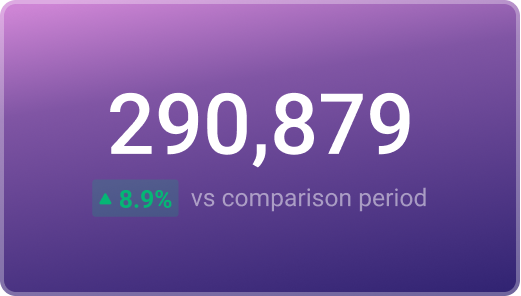Track all of your key business metrics from one screen
GET STARTED
 Xero
Bank Fees
Xero
Bank Fees The Bank fees metric tracks the charges levied by a company's bank for various services such as transaction fees, overdraft fees, and account maintenance fees.
With Databox you can track all your metrics from various data sources in one place.

Used to show a simple Metric or to draw attention to one key number.
Databox is a business analytics software that allows you to track and visualize your most important metrics from any data source in one centralized platform.
To track Bank Fees using Databox, follow these steps:
 Goals
Goals Scorecards
Scorecards Metric Digest
Metric Digest Metric Builder
Metric Builder Data Calculations
Data Calculations Performance Screen
Performance Screen